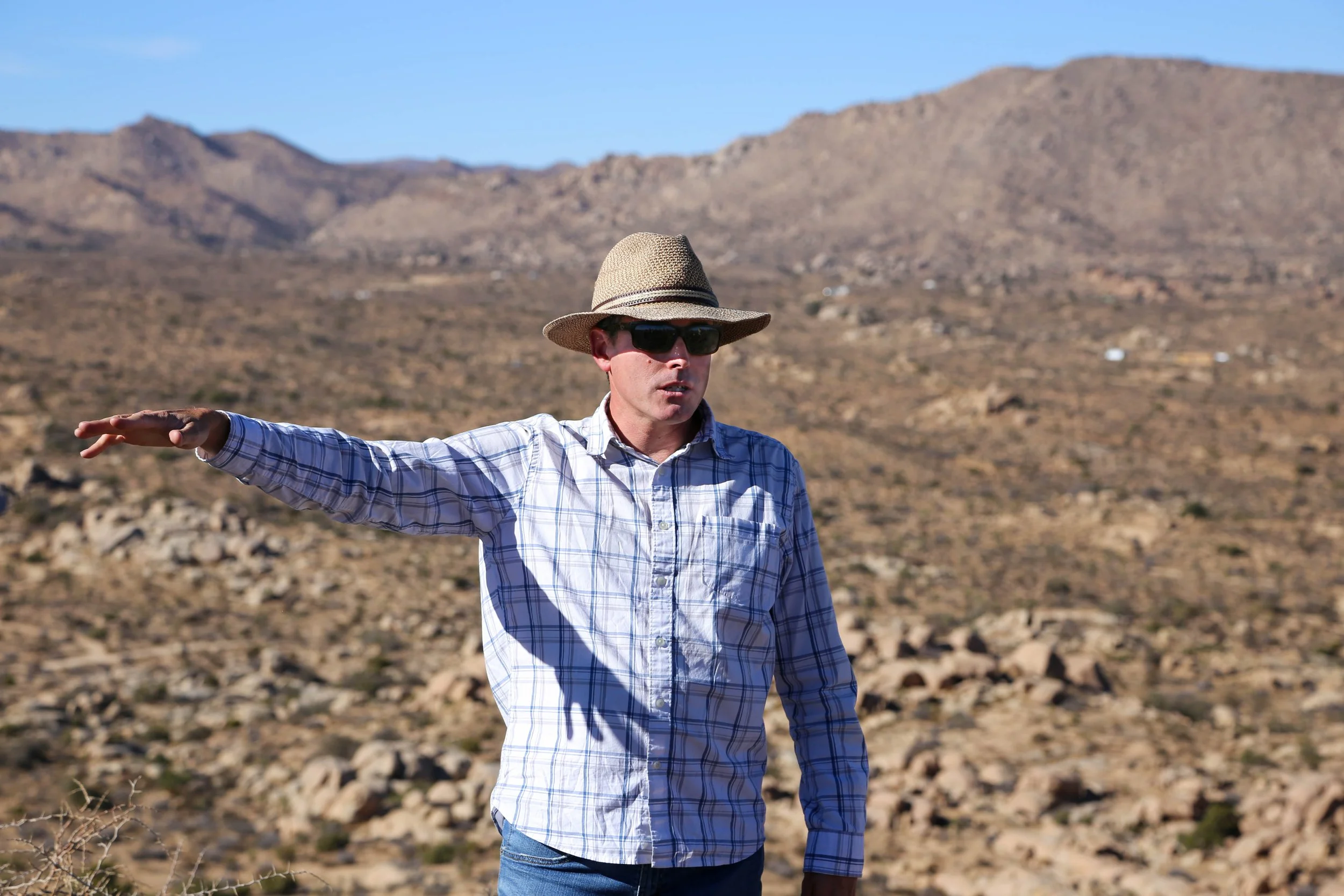Cameron Barrows
Research Ecologist, University of California, Riverside
Sand to Snow National Monument, CA
11/14/21
Bearing southern California’s beating sun like a true local, Cameron Barrows, a retired UC Riverside research ecologist describes his efforts to model climate change and its impacts on the habitat of the famous Joshua tree.
This charismatic desert plant is in danger of becoming extinct in the coming years, a fact that has motivated conservationists in California to come up with plans to save it. One such scenario involves protecting the swath of land between Joshua trees’ current habitat and the land that models show could be their future habitat, creating a migration corridor for the species. Unfortunately, this corridor would be 100 miles long, and Cam is not convinced the trees could make the trek. From beneath his baseball ball cap, Cam chuckles incredulously, “we're talking thousands of years to get that 100 miles, and climate change is going to happen in 20 to 30 years.” At the breakneck pace of climate change, the species will not be able to move quickly enough.
Cameron does see hope in “climate refugia” – the place where current and future habitats overlap – because the trees don't have to move. He says that these areas should be the top priority for Joshua tree allies. While this strategy would result in less acreage of protected habitat, Cam believes it will ensure the survival of the population of Joshua trees that still have a chance.
Given that Joshua tree habitat also serves as prime locations for solar panels, Cam says that the smaller land requirements of focusing on refugia will “open the door for people who want to do energy production that is going to get us away from fossil fuels.” He believes that to ultimately help Joshua trees and species like them, we need to be dealing with the root cause of their demise: humans putting carbon in the atmosphere.
By Kevin Faeustle




